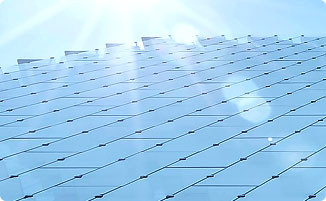After the Wenchuan earthquake in 2008, the newly revised law of the people's Republic of China on earthquake prevention and disaster reduction clearly stipulates that construction projects in densely populated places such as schools and hospitals shall be designed and constructed in accordance with the seismic fortification requirements higher than those of local buildings, and effective measures shall be taken to enhance the seismic fortification capacity; Where a completed school construction project fails to take seismic fortification measures or the seismic fortification measures fail to meet the requirements for seismic fortification, it shall, in accordance with the relevant provisions of the state, conduct seismic performance appraisal and take necessary seismic reinforcement measures. According to the classification standard for seismic fortification of Building Engineering (gb50223-2008) revised by the Ministry of housing and urban rural development and other departments in 2008, the seismic fortification category of teaching buildings, student dormitories and canteens in kindergartens, primary schools and middle schools in educational buildings shall not be lower than the key fortification category.
Seismic fortification standard requirements for key fortification buildings: the seismic fortification measures shall be strengthened according to the requirements that the seismic fortification intensity is one degree higher than the local seismic fortification intensity; However, when the seismic fortification intensity is 9 degrees, seismic measures higher than 9 degrees shall be taken; The anti-seismic measures of foundation shall comply with relevant regulations. At the same time, the earthquake action shall be determined according to the seismic fortification intensity of the local area.
Code for seismic reinforcement design
The current national standard classification standard for seismic fortification of buildings (gb50223) is divided into four categories, and its seismic check calculation and seismic structural measures identification shall meet the following requirements:
Class a buildings shall be specially studied and determined. The verification and reinforcement of anti-seismic measures shall be carried out according to the requirements of class B buildings, and the anti-seismic calculation shall be carried out according to the requirements of the anti-seismic fortification intensity higher than the local area;
For class B buildings, the verification and reinforcement of anti-seismic measures shall be carried out according to the requirements of one degree higher than the seismic fortification intensity of the area when the intensity is 6-8 degrees, and the requirements shall be appropriately increased when the intensity is 9 degrees; The seismic check calculation shall be carried out according to the requirements that the seismic fortification intensity is not lower than that of the local area;
For class C buildings, the verification, reinforcement and seismic calculation of seismic measures shall be carried out according to the requirements of local seismic fortification intensity;
For class D buildings, when the seismic intensity is 7-9 degrees, the verification and reinforcement of the seismic measures shall be allowed to be carried out according to the requirements of reducing the fortification intensity of the area by one degree; The seismic check calculation shall be allowed to be implemented according to the requirements that the fortification intensity of the area is appropriately reduced. It is allowed not to conduct seismic evaluation at 6 degrees.
Common seismic strengthening methods
1. Bonded encased steel reinforcement method
This method is also known as the wet encased steel reinforcement method, which is reliable in force, simple in construction, and small in site workload. However, the amount of steel used is large, and it is not suitable to be used in high-temperature places above 60 ℃ without protection; It is applicable to the reinforcement of concrete structures that are not allowed to significantly increase the section size of the original member in use, but require to greatly improve its bearing capacity.
2. Bonding steel plate reinforcement method
This method is fast in construction, has no wet operation on site or only a small amount of wet operation such as plastering, has little impact on production and life, and has no significant impact on the appearance of the original structure and the original clearance after reinforcement, but the reinforcement effect largely depends on the adhesive technology and operation level; It is applicable to the reinforcement of flexural or tensile members under static action and in normal humidity environment.
3. Wire winding method
The advantages and disadvantages of this method are similar to those of the enlarged section method; It is applicable to the reinforcement of concrete structural members with insufficient bearing capacity of inclined section, or the occasion where lateral restraint is required to be applied to compression members.
4. Anchor bolt anchoring method
This method is applicable to the reconstruction and reinforcement of concrete bearing structures with concrete strength grade of C20 ~ C60; It is not applicable to the above structures and light structures that have been severely weathered.
5. Reinforcement method with enlarged section
This method has simple construction technology, strong adaptability and mature design and construction experience; It is applicable to the concrete reinforcement of beams, slabs, columns, walls and general structures; However, the wet operation time of on-site construction is long, which has a certain impact on production and life, and the clearance of buildings after reinforcement is reduced to a certain extent.
6. Replacement concrete reinforcement method
The advantages of this method are similar to that of the enlarged section method, and the clearance of the building will not be affected after reinforcement, but there are also disadvantages of long wet operation time of construction; It is applicable to the reinforcement of concrete bearing members such as beams and columns with low concrete strength or serious defects in the compression area.
7. Bonding fiber reinforced plastic reinforcement method
In addition to the similar advantages of pasting steel plates, it also has the advantages of corrosion resistance, moisture resistance, almost no increase in the weight of the structure, durability and low maintenance cost. However, it needs special fire protection treatment and is suitable for concrete structural members and general structures with various stress properties.
南昌南飞防火设备制造有限公司是建筑机电抗震行业的。成立于1994年,是一家集成品支吊架、抗震支架、综合支吊架、地下管廊、BIM咨询于一体的高新技术型企业。























